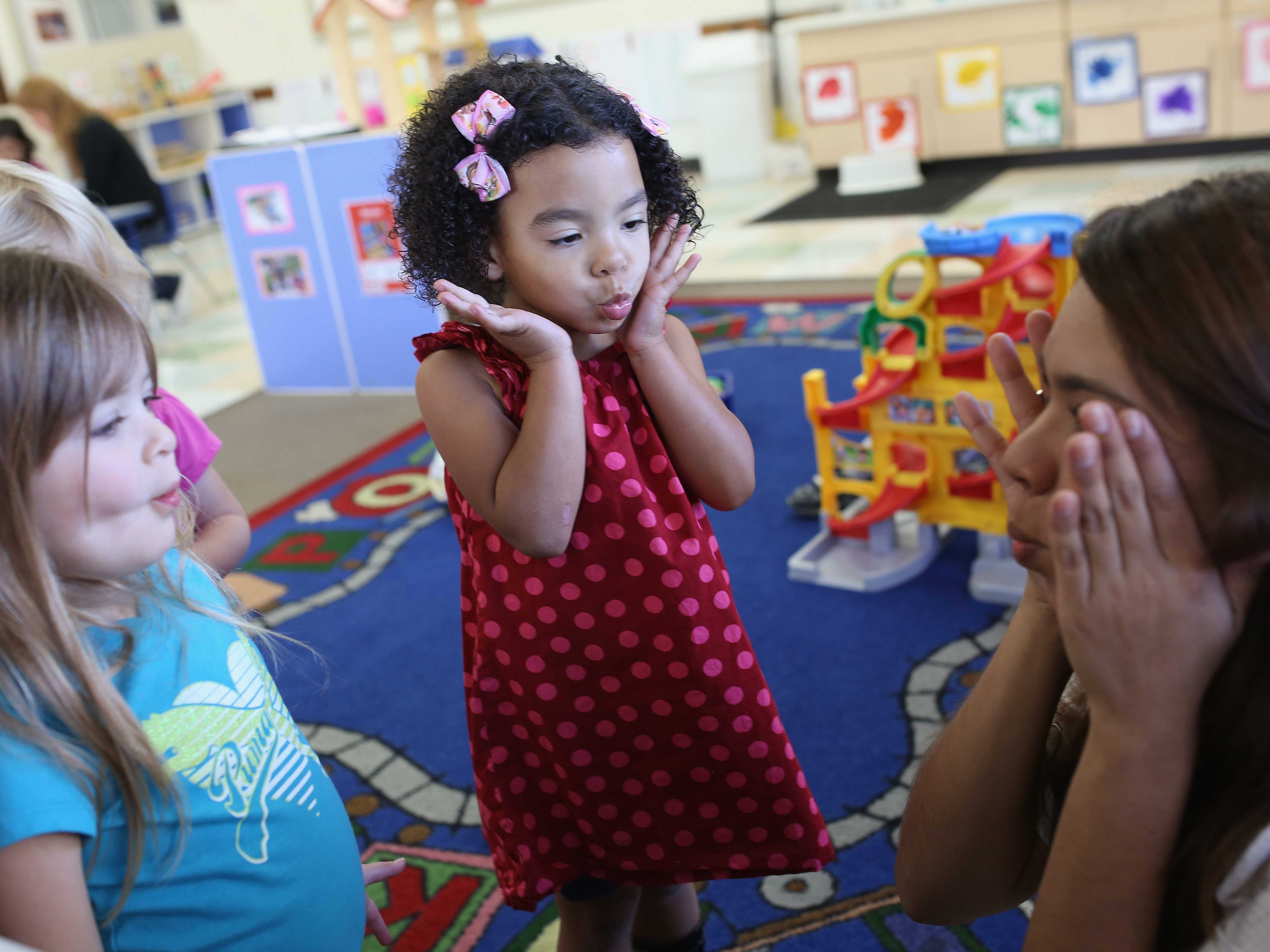Across the US, thousands of college graduates are taking the final steps in their education.
A lot has happened since they were born in the mid-1990s, and perhaps no one has seen the effects of those changes on future generations than teachers.
Business Insider spoke with a handful of elementary, middle, and high school teachers to get a sense of just how much the US education system has evolved over the past 20 years.
Anita Perry — Title 1 teacher from Pepperell, Massachusetts

Perry has been teaching since the 1970s, off and on between a regular teacher and a Title I teacher who provides extra instruction for struggling kids. In recent decades, she says two things have stood out about students:
The first is that more is expected of them academically in kindergarten. The other is she has to deal with more kids who have conditions requiring medication, such as ADHD. “So now a classroom teacher must also keep up with medical lingo as well as education directives,” she tells Business Insider.
Schools have also experimented at length with different forms of instruction, from building classroom libraries to creating more structured reading series, Perry says. "Not one program fits all; and each time there's a new administrator, there's a new program! Then don't get me started about the testing."
Steve Isaacs — Computer technology teacher from Basking Ridge, New Jersey

Isaacs has been teaching for 25 years, primarily to 7th and 8th graders. He says tools like Google and Wikipedia have made it unnecessary for students to memorize facts as much as they did in the past. If teachers have access to technology like Google Chromebooks or iPads, they can individualize their lesson plans to almost every student.
"The idea of bringing games into the learning and gamifying the classroom have become more mainstream, providing opportunities for greater student engagement," he tells Business Insider. "We can't prepare students for jobs that exist, but rather prepare them to be flexible and adaptable to jobs that don't yet exist."
Hope Rigby-Wills — Special education teacher from Houston, Texas

Rigby-Wills has been teaching since 1996. Within just the past five or six years, parent involvement has gone way down, she says. "I've seen a drop off in the number of parents who are participating in conferences, PTO meetings, and who are able to assist with homework," she tells Business Insider.
She also has noticed schools' waning interest in letting kids have unstructured playtime.
"It seems to me that all of the work done around child development has been thrown out the window," she says. "And instead of considering the diverse development rates of children, we have a rigid set of structures that, if not met, mean the students are somehow behind."
Rigby-Wills laments the "college-bound-only culture," and wishes there were more avenues for kids to pursue after high school, such as vocational programs.
Steve Sonntag — Spanish and German teacher from Modesto, California

Sonntag began teaching in 1970. He says the biggest changes have come in what schools and parents expect from teachers, and what parents expect of their kids.
Teachers are generally more relaxed in their teaching style, but still held to a higher standard of accountability given that they have to post grades, absences, and assignments online for parents and students, he says. Meanwhile, students are under much more pressure to keep up solid GPAs to maximize their chances of getting into college.
"Many students become frustrated and stressed with the high demands of their classes," Sonntag tells Business Insider, though he does say there can be an upside. "This is also for the pride of the students and the pride of the parents."
Charlene Vermeulen — Assistant principal from Carthage, North Carolina

Vermeulen started teaching in 1991. A lot of the changes she's seen have been negative, she says.
Kids are still getting into mischief at similar rates as they used to, but "the fringe behaviors - mental health issues such as anger management, anxiety disorders, cutting, and depression have increased drastically," she tells Business Insider.
What's more, kids and parents don't seem to have the same thirst for education that they did 20 years ago. she says.
"The top five percent still drive to excel, but the largest percentage of students barely pass their classes," she says. "Both students and families seem bored with learning, and little value is placed on grades, except to ensure that they avoid summer school."

